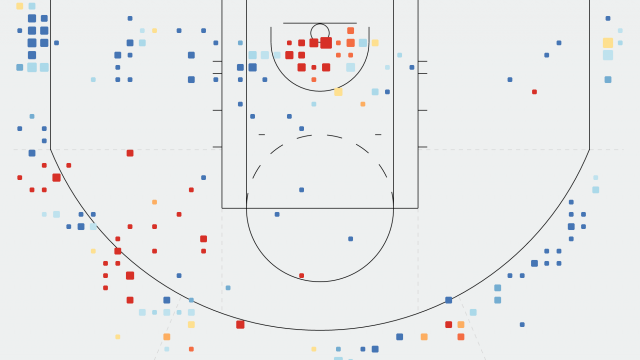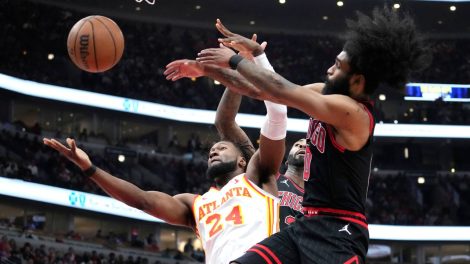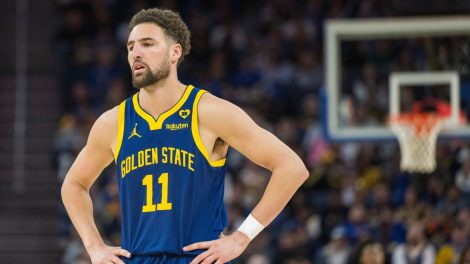The Toronto Raptors expedited the debut of the Raptors 905 in large part to facilitate the development of Bruno Caboclo. The 20th overall pick in the 2014 draft, Caboclo essentially red-shirted his rookie year and entered the inaugural 905 campaign as the face of the team and its most important project.
Thanks to the existence of the team, the work of head coach Jesse Mermuys and his staff, and all the minutes he could handle, Caboclo’s de facto freshman season went about as well as the organization could have hoped. Fran Fraschilla famously described Caboclo as “two years away from being two years away,” and Caboclo’s rapid improvements—the most important of them mental—have been such that Fraschilla’s prediction may end up being off by a year. Or more.
“I give him a lot of credit,” Mermuys says of Caboclo. “You’re talking about a lot of improvement in a short amount of time. He should feel really good about it, and I know as an organization, it got us even more excited.”
Evaluating Caboclo’s progress can be difficult since there’s no year-over-year comparison to make. Instead, it’s important to look for growth since October or November. Luckily, there was plenty.
Caboclo punctuated his season emphatically in the closing minutes of the 905’s final game. Frustrated by the Canton Charge on the offensive end for most of the night, Caboclo showed a newfound maturity in keeping a cool head and impacting the game elsewhere—something he had trouble doing earlier in the year.
Catching a pass on the left wing in transition late in the game, he didn’t hesitate for a moment, driving at a quality defender in Sir’Dominic Pointer and throwing down a two-handed jam right over top of him.
Attacking off the catch like that has been one of the most obvious improvements Caboclo’s made. Earlier, hesitation led him to hold or dribble longer than he should, often resulting in a late heave from long-range—his 33.5-percent clip from outside probably undersells the quality of his shooting. As the game slowed down and he improved his first step and dribble, Caboclo made quicker decisions, preventing defenders from getting set facing him up.
The next wrinkle is to create for teammates while attacking. Norman Powell used his time with the 905 to improve that aspect of his game to great effect. Caboclo’s not there yet, but he got better at identifying passing opportunities.
If the initial attack doesn’t present itself, Caboclo is fond of using his length to create separation on a pull-up jumper. Mid-range shots aren’t the most efficient, but they’re a good weapon to have in the arsenal, and Caboclo’s ridiculous wingspan makes his shot difficult to block. When he adds an element of Dirk Nowitzki, it’s tough to even get a hand up.
Caboclo averaged 14.7 points on 40.3-percent shooting, with 6.5 rebounds, 1.7 assists, 1.1 steals, and 1.8 blocks for the year. The conclusion of the season came at an inopportune time, as he averaged 23 points and nine rebounds while shooting 53.1 percent over his final three games. There’s still work to be done on the offensive end—Caboclo identifies his handle, which is a little too loose and leaves him somewhat turnover-prone, as his primary focus from a skill perspective—and defences began to key in on his strong preference for the left side of the floor.

(Courtesy AustinClemens.com)
These are good steps, but the offence is almost secondary to the growth he showed on defence. A forward with a seven-foot-seven wingspan is usually a defensive prospect first, and that length proved easy to harness once Caboclo gained a feel for his defensive assignments.
The improvements he made don’t necessarily jump off the screen, because so much of his development was situational and play-reading. Simply playing 1,271 minutes of pro basketball was a necessary trial-by-fire for his defensive awareness, and the variety of ways the 905 used Caboclo in the season’s final weeks, as the team reached their defensive peak, speaks to their comfort with his ability to adjust. Instead of protecting him, they began switching freely, letting him use his length to hedge—and gamble—and trusting him to recover.
He was able to use his length to disrupt driving and passing lanes with the confidence he could quickly close back out. The 905 were 1.7 points per 100 possessions better on the defensive end with Caboclo on the floor, in part because of how much chaos he created as a free safety of sorts.
That length came into play when the 905 began shifting Caboclo to the power forward position more often, too, helping make up for a lack of strength inside.
The transition to the four, which included learning new plays and assignments, went well enough that Mermuys even rolled the dice with Caboclo as a centre down the stretch. Caboclo says it was the first time he’d played centre since he was maybe 15. That’s not tenable given Caboclo’s lack of strength, but his length and timing at the rim proved strong deterrents.
“By the end, he was able to impact games. Even that last game, he won the game for us, and he didn’t make any shots,” Mermuys says. “He didn’t shoot the ball well, missed a lot of great open looks. But he had a presence to him defensively.”
It’s no longer outside the realm of possibility that Caboclo could factor into plans in 2016-17.
“So much can happen in an NBA summer, but absolutely,” Mermuys says. “He’s moved himself so much further along. It’s not like where it was, where there’s no way you could put him in a game. It’s not out of the question that he could go into a game and possibly impact a game with his length and his shooting.”
Realistically, Caboclo’s still not NBA-ready, but that’s fine, because the team accepted the lengthy development curve early on. The important thing for the Raptors is that Caboclo is much, much closer to handling NBA spot minutes than he was in October.
“He ended up pretty well. It’s gonna help him, believe me,” Raptors head coach Dwane Casey says of the D-League season. “Hopefully in these next few games we get a chance to get him some minutes to send him into the summer, to let him know the different things to work on.”
When a player is so far away and still so young, a lot can happen between the end of one season and the beginning of the next, and Summer League in July will be instructive as to what Caboclo may be able to contribute next season. He still needs a lot of work across the board, to the point that the Raptors aren’t even focusing on specific areas yet. But given the vast amount work he’s put in since draft night, there’s little reason to doubt he’ll continue to improve.
“Of course he’s still gotta keep growing. Keep understanding the basketball game, the NBA. Outside the lines, too,” close friend and teammate Lucas Nogueira says. “I think next year could be a really special year for him. I think he’s going to have way more opportunity to play with the first team next year.”
The fact that NBA minutes are even being talked about when Caboclo’s still supposed to be two years away has to be encouraging for the Raptors.








